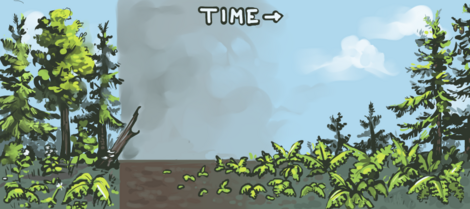Fern spike
The spikes are believed to represent a large, temporary increase in the number of ferns relative to other terrestrial plants after the extinction or thinning of the latter.
Fern spikes are strongly associated with the Cretaceous–Paleogene extinction event,[1][2] although they have been found in other points of time and space such as at the Triassic-Jurassic boundary.
[3][4] Outside the fossil record, fern spikes have been observed to occur in response to local extinction events, such as the 1980 Mount St. Helens eruption.
Volcanic eruptions can also wipe out local ecosystems through pyroclastic flows and landslides, leaving the ground bare for new colonization.
[8] Following major disturbances that clear or reduce plant life, the ground would receive ample sunlight that may promote spore germination.
[9] After the eruption of El Chichón, the fern Pityrogramma calomelanos was observed to regenerate from rhizomes buried by ash, even though the plants' leaves were destroyed.
[6] Because fern spikes generally coincide with certain disasters such as meteorite strikes and volcanic eruptions, their presence in the fossil record can indicate those events.
[10] After the Triassic-Jurassic extinction event (201.3 Ma), ferns drastically increased in abundance while seed plants became scarce.
